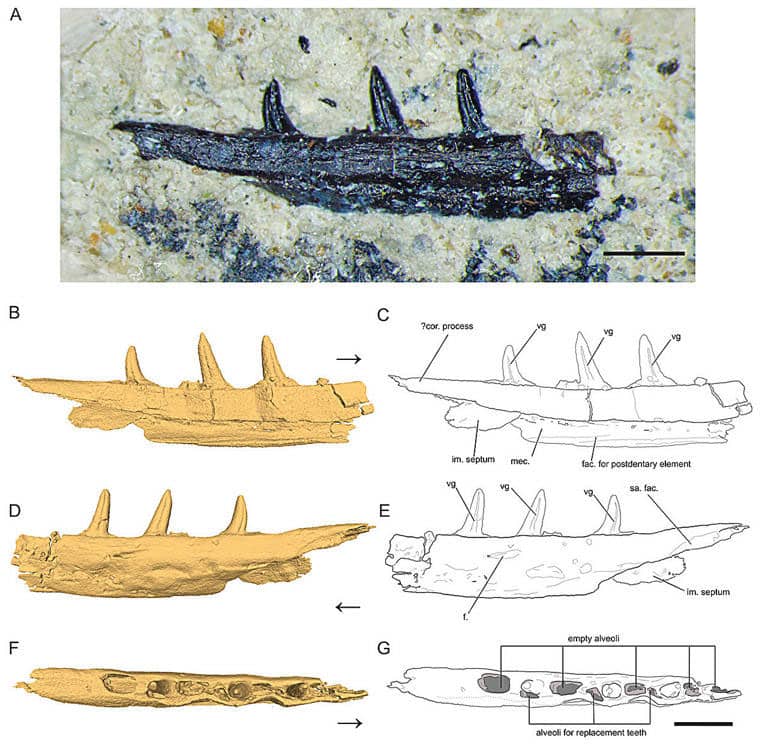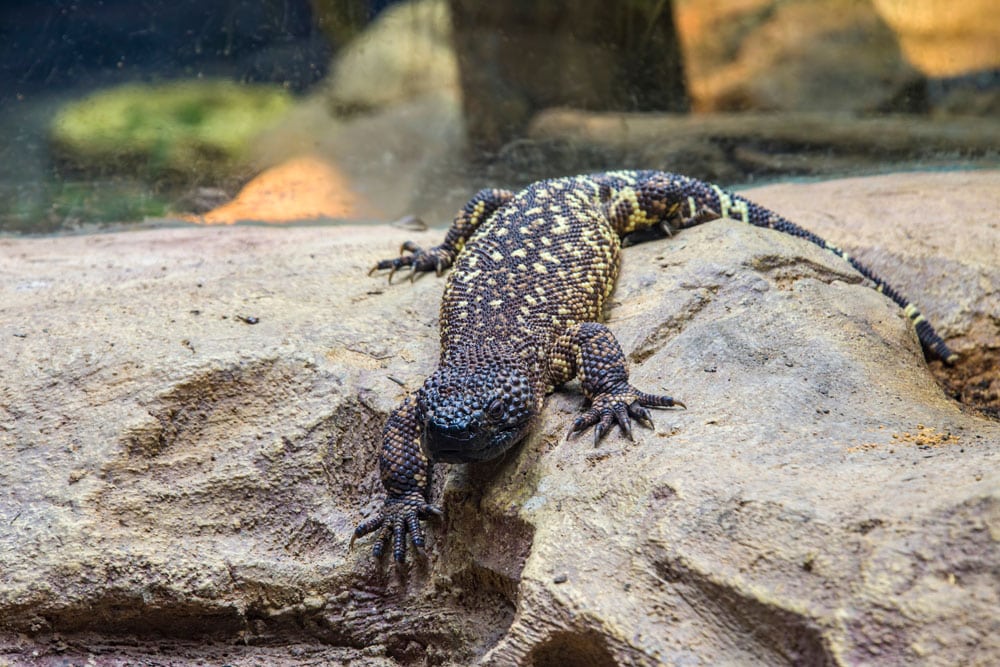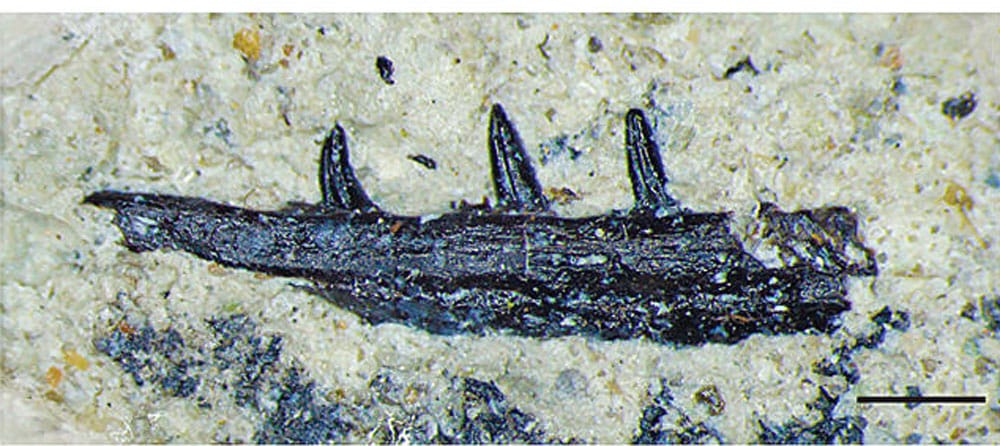Microzemiotes sonselaensis represents the third Late Triassic reptile species that possibly used envenomation in either feeding or defensive strategies.
Researchers with the Virginia Polytechnic Institute and State University, National Museum of Natural History, Smithsonian Institution and Petrified Forest National Park, Petrified Forest, AZ have discovered a potentially venomous lizard species that lived during the Triassic Period in what is now Arizona.
The reptile’s partial left dentary was found in the Sonsela Member of the Chinle Formation (middle Norian, Upper Triassic) of northeastern Arizona, U.S.A. The new species is named Microzemiotes sonselaensis gen. et sp. nov. The researchers have identified the species as a diapsid reptile of the subclass Diapsida. The finding is based on the monocuspid teeth that don’t have carinae and serrations.

(A) Photograph of Microzemiotes sonselaensis holotype DMNH PAL 2018-05-0017, (B, C) three-dimensional render and line drawing of the dentary in lingual view, (D, E) labial view, and (F, G) dorsal view. Scale bar equals 1 mm, arrow points anterior. Abbreviations: im, intramandibular; mec, Meckelian canal; fac, facet; f, foramen; sa, surangular; vg, venom groove.
The teeth have external grooves that run the “length of the crown on the labial and liminal sides.” This points to Microzemiotes sonselaensis having the same type of teeth as the beaded lizard, a venomous lizard found in Mexico and into southern Guatemala. The grooves in the beaded lizard are used to deliver venom and Microzemiotes sonselaensis possesses the same grooved teeth. The teeth of this new species are also similar to teeth found in the Gila monster (Heloderma suspectum). The teeth show deep surgical venom grooves. They lack interior venom canals with apical openings, the researchers wrote.

Microzemiotes sonselaensis having the same type of teeth as the beaded lizard. Photo by Danny ye/Shutterstock
Microzemiotes sonselaensis represents the third Late Triassic reptile species that possibly used envenomation in either feeding or defensive strategies, the researchers said. The other two are Uatchitodon kroehleri and Uatchitodon schneideri. These reptiles are only known for their isolated teeth.
The complete paper, “A small venomous reptile from the Late Triassic (Norian) of the southwestern United States” can be read on the PeerJ website.



